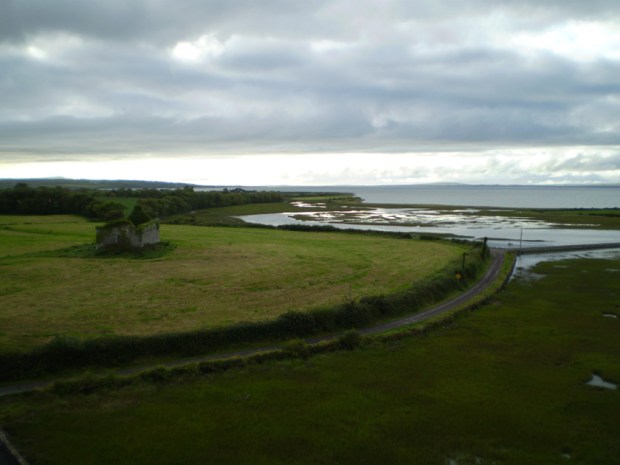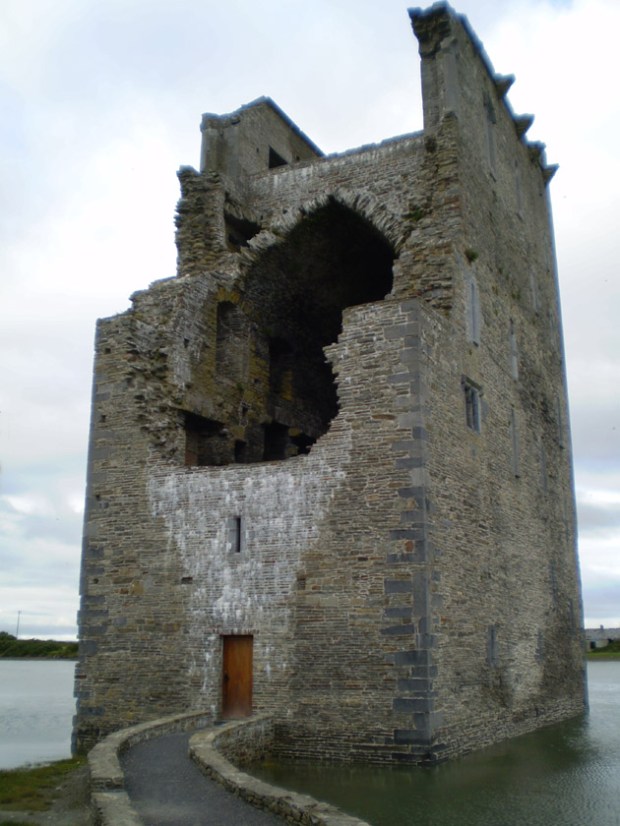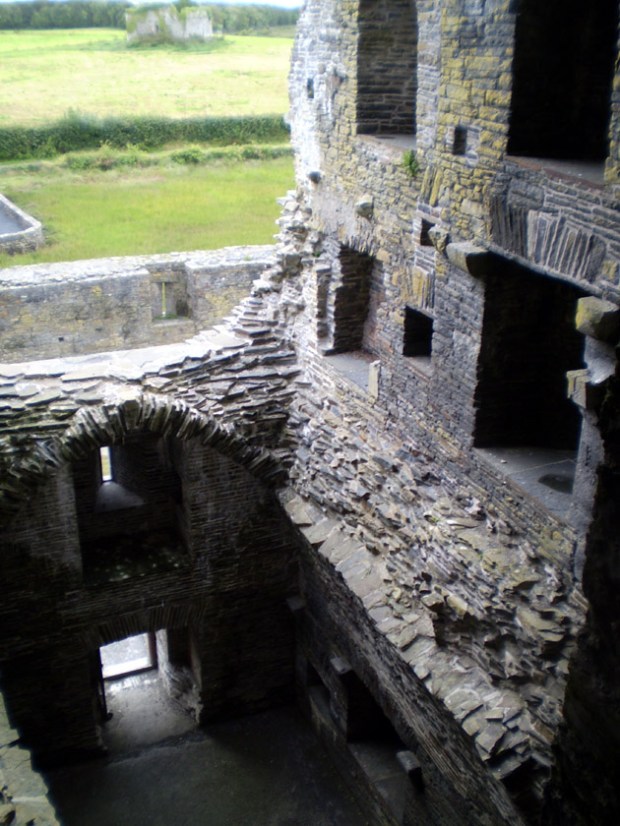Exploring with The Keeper of the Castle

The monthly ArtSmart Roundtable brings together posts from some of the best art history-focused travel bloggers. For December, we are discussing some of our favorite art and travel experiences. You can find links below to all the group’s articles.
I’ve been lucky enough to see some really incredible art in person, in situ and sometimes under incredible circumstances (like seeing the Florence Baptistry for the first time as part of a religious procession!) For me, a memorable travel and art experience includes encountering beautiful, unique or unknown pieces and places, but also gives me to opportunity to understand a culture or people better. And so for this month’s theme, I was immediately reminded of my tour of Carrigafoyle Castle in County Kerry, Ireland with the Castle Keeper himself.
During my road trip though Ireland, I had planned to stop in Ballylongford because of a family connection there. Trying to find accommodations in the area, I booked a Bed and Breakfast a few miles away from Ballylongford and by chance right next to Carrigafoyle Castle. “Perfect, a double dose of history!” I thought. I had hoped to explore the castle the afternoon I arrived, but we were running late. As I was rushing my bags into the B&B, I mentioned to Garrett the owner, that I needed to hurry because the castle was closing in 30min. He laughed and explained that he was in charge of locking it up and would let us stay late. He jingled a huge ring of skeleton keys to prove it!
Carrigafoyle Castle was completed in 1480’s and served as the seat of the regional baron. Situated on a marshy portion of the coast accessible to ocean going vessels, it became a strategically important trading hub. In quelling part of the Second Desmond rebellion, Sir William Pelham of England bombarded the castle in March 1580, almost completely blowing off one side of the building. After this Irish defeat, Carrigafoyle Castle was left in ruin until money from the European Union was used to stabilize it in the early 2000’s.

Carrigafoyle Castle viewed from the South showing how it sits on the water. Part of its outer rampart is also still presnt. (Photo: Kerry Gems)
An impressive and heavy fortification, the square shaped castle is 86ft tall. The front entrance leads into a massive room with an arched ceiling. There are two large staircases which opened into the great room of each floor (now closed off with gates in the image above) and smaller working rooms where domestic and clerical activities occurred. The castle was constructed with small blocks of limestone and mortar. The broken walls therefore have a rough, wounded look.
After some time walking through the castle, Garrett joined us. He opened some of the locked doors letting us into the periphery rooms with their blacken fireplaces and low ceilings. He explained what each room would have been for, how they would have been decorated and pointed out the wall holds that would have anchored the wooden flooring of each level’s great room. He unlocked the staircase to the roof and we were able to enjoy the view of the surrounding area. Using the 15th century iron lock works, he opened the original wooden “front door” on the ocean side, letting the water lap gently over the door step.
Garrett’s best stories were about playing in the ruined castle as a child. Imagine pretending you are a knight in your own ruined fort! Most of the recent restoration work had sought to make the castle safe, like filling in holes in the periphery rooms, fixing broken stairs and putting up gates over dangerous open drops. As a child, he had jumped and climbed through these hazards. I could tell Garrett missed the old ruined castle but was happy with the repairs. The castle still had its moss, bird’s nests and the raw, gaping damage of battle.

View from the top of Carrigafoyle Castle. It was from this small hill that the castle was bombarded and taken in 1580.
Carrigafoyle Castle isn’t the most decorative building I’ve ever seen. Still, there was something incredible about the stone door framing and the little artistic patterns hammered into the original iron door hinges. I loved the feeling of impressive strength from the thick walls with their tiny, defensive slice-shaped windows. There was a sense of majesty from the grand, vaulted ceiling in the entry hall and the equally impressive vaulted upstairs hall. The cannon damage also gave me the opportunity to see the fort’s construction which is often hidden in complete castles. In the end, what made this such a memorable experience was being able to explore the castle with someone who knew so much about it – its history, design and little eccentricities – but who was also so connected to it personally.
For the rest of the December ArtSmart Roundtable, see:
- Jeff Titelius of Eurotravelogue: Unforgettable Moments at the Vatican
- Erin from A Sense of Place: How Ireland Brought Me to the Basilica of San Clemente
- Lesley Peterson of Culture Tripper: The Staffordshire Potteries
- Leslie at Career Girl Travels: Fresco Feelings in Milan
- Jenna of This is My Happiness: Art and Travel: Different View of Florence








Reblogged this on Art History Ramblings.
LikeLike
Remarkable photos, Christina. I love the interior shot with all of the castle’s intricate stonework evident as well as the glorious view from the top.
LikeLike
Love it! Especially the stories told by the keeper. And the stonework is so pretty. There are so many ruins dotting the Irish countryside that have barely any information posted, so to have a private tour is just awesome.
LikeLike
What a stroke of luck to have those the owner of the B & B also be the gate keeper of the castle! wow!!! The entire place to yourself…I would have loved every minute!!
LikeLike
I definitely got lucky that day! It was great experience and totally unexpected. That’s the best thing about traveling. 🙂
LikeLike
This is so cool! Takes me back to the times I’ve spent exploring run-down castles in my Ireland travels. And means so much more since you have ties to the area! Loved your photos : )
LikeLike
Thanks! Exploring ruins is up there with Guinness when in Ireland 🙂
LikeLike